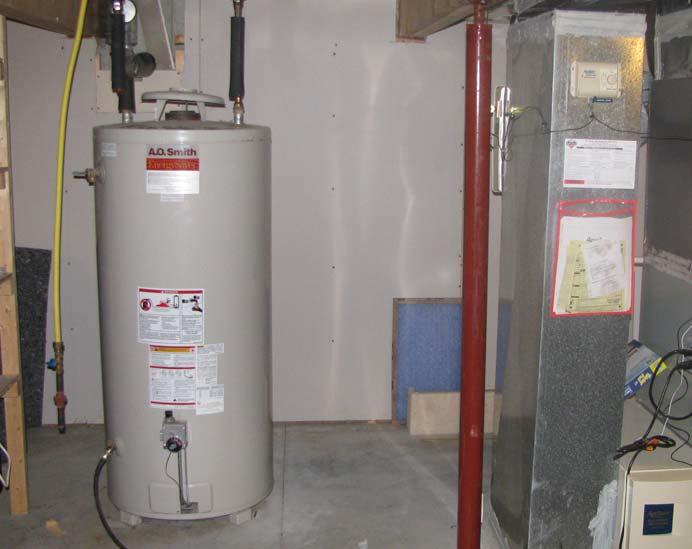Professional Advice for Caring for Your Home's Hot Water SystemKey Maintenance Tips for Your Home's Hot Water System
Professional Advice for Caring for Your Home's Hot Water SystemKey Maintenance Tips for Your Home's Hot Water System
Blog Article
How do you feel when it comes to How to Maintain a Hot Water Heater in a Few Simple Steps?

Hot water is essential for everyday convenience, whether it's for a revitalizing shower or washing meals. To guarantee your hot water system runs efficiently and lasts much longer, normal maintenance is essential. This article supplies sensible tips and insights on exactly how to maintain your home's hot water system to stay clear of disturbances and pricey repairs.
Introduction
Preserving your home's warm water system might seem complicated, however with a couple of straightforward actions, you can guarantee it runs efficiently for several years to come. This guide covers whatever from understanding your hot water system to DIY upkeep ideas and recognizing when to call in professional help.
Significance of Preserving Your Warm Water System
Regular upkeep not just extends the lifespan of your warm water system yet also guarantees it operates effectively. Ignoring maintenance can cause lowered efficiency, greater energy expenses, and even early failure of the system.
Indications Your Warm Water System Requirements Upkeep
Knowing when your hot water system needs interest can prevent major problems. Keep an eye out for signs such as inconsistent water temperature level, odd sounds from the heater, or rustic water.
Flushing the Water Heater
Purging your hot water heater removes sediment build-up, boosting efficiency and extending its life.
Monitoring and Changing Anode Rods
Anode rods avoid corrosion inside the storage tank. Evaluating and replacing them when broken is crucial.
Complicated Problems Calling For Specialist Assistance
Instances consist of major leaks, electrical issues, or if your hot water heater is continually underperforming.
Routine Professional Maintenance Advantages
Expert upkeep can consist of extensive examinations, tune-ups, and making certain conformity with safety criteria.
Evaluating and Readjusting Temperature Setups
Readjusting the temperature level setups makes certain optimal performance and safety.
DIY Tips for Maintenance
You can perform several upkeep jobs on your own to maintain your hot water system in top problem.
Looking for Leakages
Regularly inspect pipes and links for leakages, as these can cause water damages and higher bills.
Recognizing Your Warm Water System
Prior to diving right into upkeep jobs, it's helpful to recognize the standard elements of your warm water system. Normally, this consists of the water heater itself, pipes, anode rods, and temperature controls.
Monthly Upkeep Tasks
Routine monthly checks can aid capture minor issues before they rise.
Evaluating Stress Alleviation Valves
Checking the pressure safety valve ensures it functions correctly and prevents too much pressure accumulation.
Shielding Pipes
Insulating warm water pipelines minimizes warm loss and can save power.
When to Call an Expert
While DIY upkeep is useful, some problems require specialist know-how.
Conclusion
Normal maintenance of your home's warm water system is necessary for performance, durability, and expense savings. By complying with these suggestions and recognizing when to seek expert assistance, you can ensure a reliable supply of hot water without unanticipated interruptions.
How to Maintain an Instant Hot Water Heater
Before tinkering with your hot water heater, make sure that it’s not powered on. You also have to turn off the main circuit breaker and shut off the main gas line to prevent accidents. Also turn off the water valves connected to your unit to prevent water from flowing into and out of the appliance. 2. When you’re done, you have to detach the purge valves’ caps. These look like the letter “T” and are situated on either side of the water valves. Doing so will release any pressure that has accumulated inside the valves while at the same time avoid hot water from shooting out and burning your skin. 3. When the purge valves’ caps are removed, you have to connect your hosing lines to the valves. Your unit should have come with three hoses but if it didn’t, you can purchase these things from any hardware or home repair shops. You can also get them from retail stores that sell water heating systems. Read the user’s manual and follow it to complete this task properly. When the hosing lines are connected, open the purge port’s valves. 4. You should never use harsh chemical cleaners or solutions when cleaning your unit. Make use of white vinegar instead. It should be undiluted and you’ll probably use about 2 gallons. 5. Now flush your water heater. This task should probably take about 40 minutes. We can’t give you specific directions for this because the procedure is carried out depending on the type, model and brand of your heater. With that being said, refer to the user’s manual. 6. When you’re done draining the unit, you have to turn off the purge port valves again. Remove the hosing lines that you earlier installed on each of the water valves. Put the valve caps (purge port) back in their respective places and be very careful so as not to damage the rubber discs that are found inside these caps. 7. Now that everything’s back in place, check your user’s manual again to find out how to reactivate your water heating system. 8. Once it is working, turn one of your hot water faucets on just to let air pass through the heater’s water supply pipes. Leave the tap on until water flows smoothly out of it. https://www.orrplumbing.com/blog/2014/september/how-to-maintain-an-instant-hot-water-heater/

Hopefully you enjoyed reading our part on Tips on Maintaining a Water Heater. Thanks for finding the time to read through our piece. I beg you pause to distribute this content if you enjoyed reading it. I am grateful for your time. Come back soon.
Visit Our Site Report this page